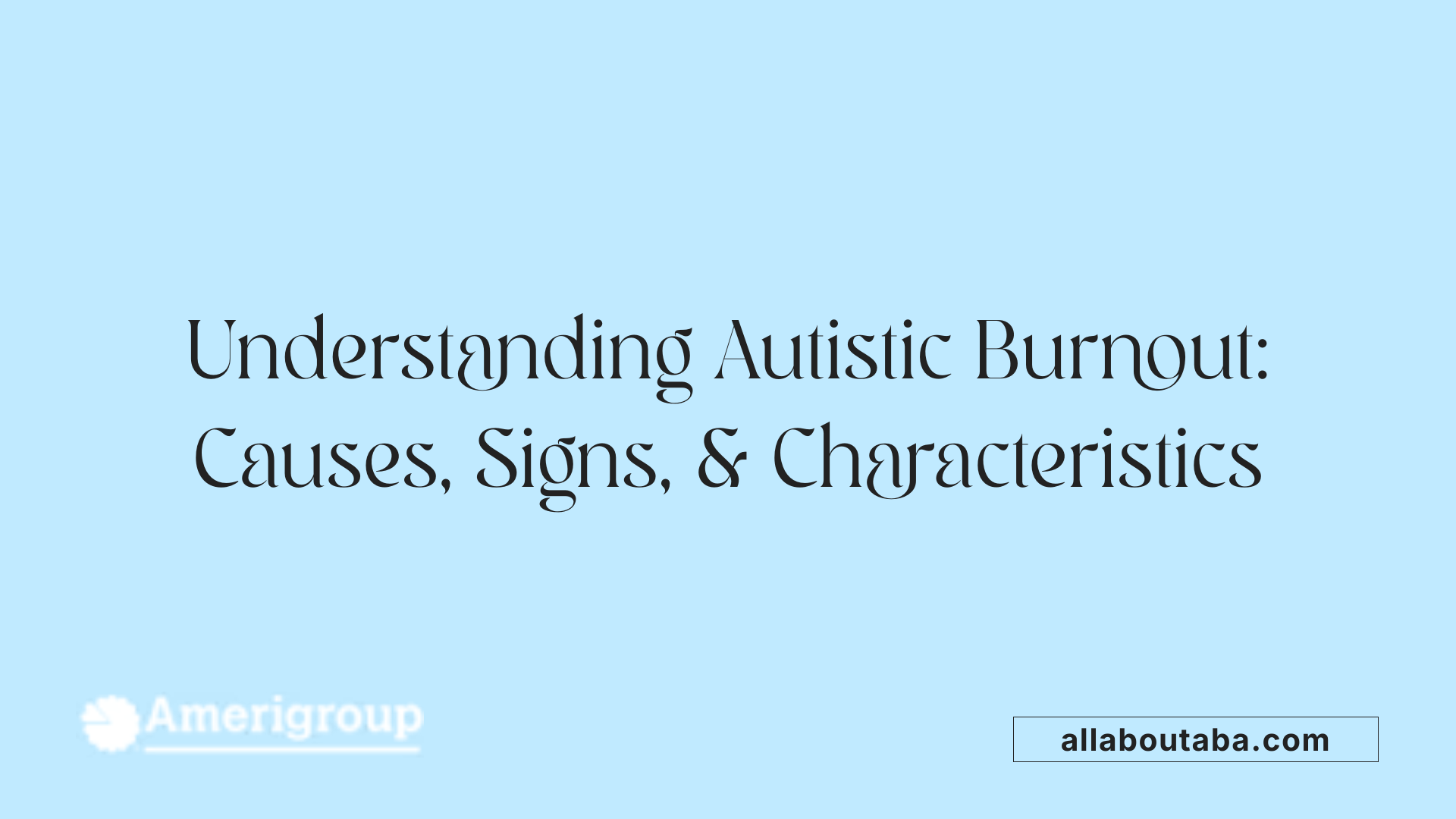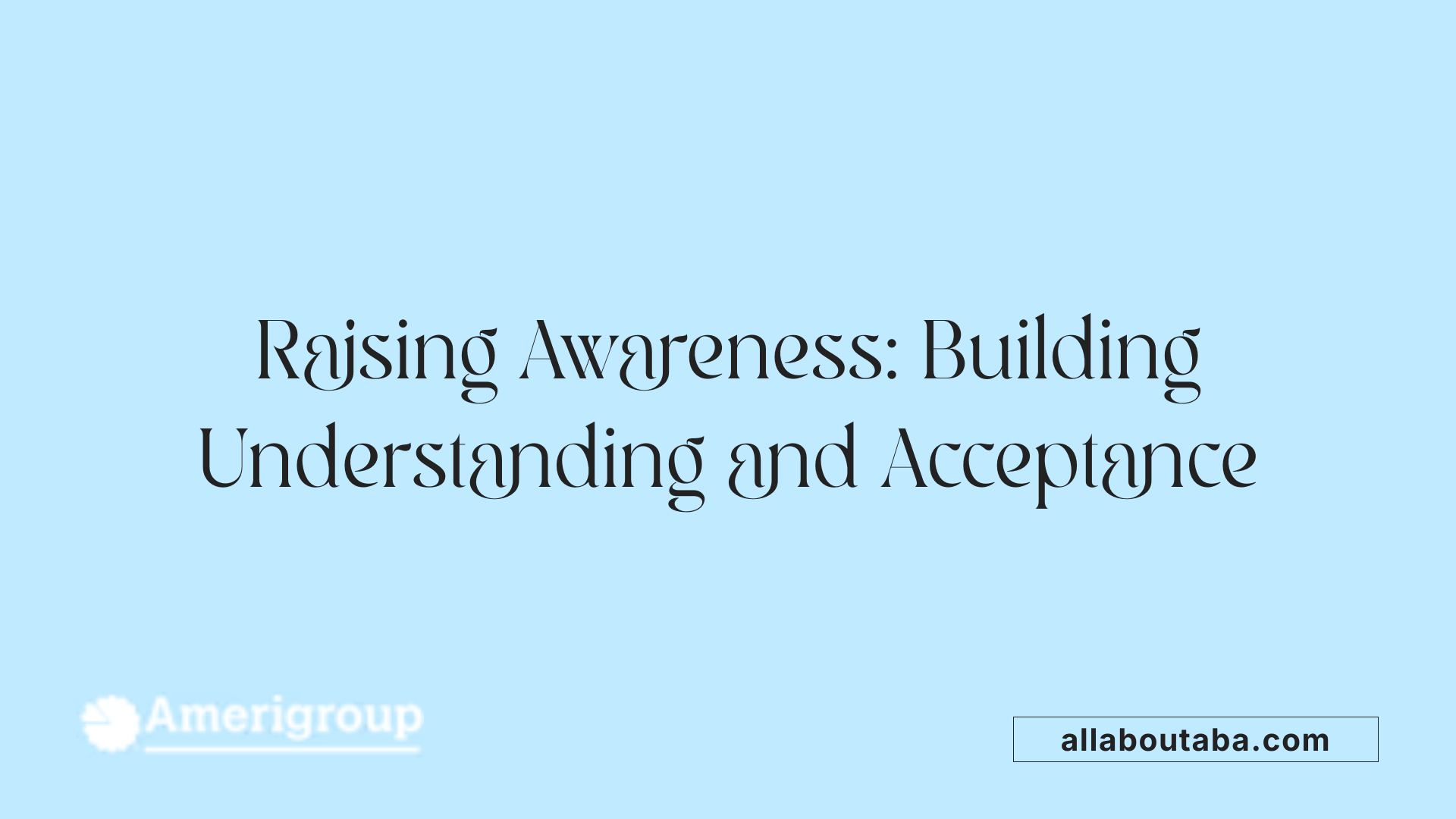Navigating Autistic Burnout in Adulthood
Autistic burnout is a complex and challenging experience that deeply affects many autistic adults. As societal understanding grows, so does awareness of how chronic stress, sensory overload, and societal expectations contribute to this state. Recognizing, preventing, and managing burnout requires a nuanced approach that is personalized to each individual's needs. This article explores the core aspects of autistic burnout, offers practical strategies for recovery, highlights the importance of systemic support, and provides resources to foster resilience and well-being.
Defining Autistic Burnout: Causes, Signs, and Characteristics

What is autistic burnout, and what are its common causes and signs?
Autistic burnout is a prolonged state of intense physical, emotional, and mental exhaustion that many autistic individuals experience. It often lasts more than three months and significantly impacts daily life.
This condition results from chronic stressors, including sensory overload, masking autistic traits to fit neurotypical expectations, social challenges, and barriers to adequate support. External pressures, major life changes, or sustained demands can trigger burnout, especially when one feels unsupported or misunderstood.
Common signs of autistic burnout include severe fatigue that doesn’t improve with rest, a noticeable loss of skills or motivation, heightened sensitivities to light, sound, or touch, and emotional dysregulation. Many experience withdrawal from social activities, sleep disturbances, and difficulty completing everyday tasks.
In addition to these, feelings of hopelessness, increased anxiety or depression, and a sense of disconnection from self are often reported. Recognizing these signs early can help in taking steps toward recovery.
Preventing burnout involves understanding and accepting one’s needs, reducing sensory and social demands, seeking suitable accommodations, and engaging in activities that promote self-care and self-advocacy. It’s essential to create a supportive environment that recognizes the realities of autistic experiences and promotes wellbeing.
Recognizing and Responding to Burnout and Shutdowns

How can autistic adults recognize and cope with burnout and shutdowns?
Autistic adults often experience signs that signal they are approaching or are in a state of burnout or shutdown. Recognizing these early symptoms is vital for initiating effective coping strategies. Common early warnings of burnout include increased exhaustion, irritability, difficulty concentrating, and heightened sensory sensitivities. They might feel overwhelmed more easily or find it challenging to meet daily responsibilities.
Shutdowns, on the other hand, are characterized by a retreat-like response—becoming unresponsive, withdrawn, or overly fatigued—serving as a protective mechanism against sensory or emotional overload. During shutdowns, individuals may become less communicative, isolate themselves, or show physical signs of fatigue.
To manage these states, creating a personalized shutdown or burnout plan is crucial. This plan can include.
- Finding and maintaining calm, sensory-friendly environments.
- Taking regular, scheduled breaks to prevent overstimulation.
- Engaging in sensory regulation activities, such as using noise-canceling headphones or fidget toys.
- Ensuring access to activities that promote relaxation, like meditation or deep breathing exercises.
- Seeking support from trusted individuals or professionals when needed.
Understanding triggers—such as loud noises, bright lighting, sudden routine changes, or social demands—and actively managing energy levels with tools like the Spoon Theory can delay or prevent burnout and shutdown states.
Patience and validation from family, friends, and colleagues play a significant role in recovery. Supporting autistic individuals involves respecting their need for space, listening to their cues, and encouraging self-care practices. Continuous self-awareness, coupled with proactive planning and support, fosters resilience and helps sustain well-being over time.
Developing Strategies for Prevention and Management

What strategies can help prevent and manage autistic burnout in adults?
Preventing and managing autistic burnout involves a combination of self-awareness, environment adaptations, and support systems. Recognizing early signs of exhaustion and stress enables individuals to put proactive measures in place before burnout escalates.
Creating sensory-supportive environments is vital. Simple modifications such as using earplugs, establishing quiet spaces, and reducing exposure to bright lights or strong smells can help minimize sensory overload. Respecting personal boundaries and allowing unmasking—acting naturally without hiding autistic traits—reduces the emotional and physical toll of masking behaviors.
Effective energy management techniques, like energy accounting, help individuals stay within their limits. This involves tracking activities and setting boundaries on daily or weekly energy expenditure to prevent overexertion. Incorporating regular breaks, engaging in soothing activities such as meditation or spending time in nature, and scheduling rest periods into routines are essential practices.
Building supportive networks is also crucial. Connecting with peer groups or support communities provides understanding and validation. Seeking help from trauma-informed therapies, like art or mental health counseling, can aid in emotional processing and resilience development.
Advocacy for systemic change plays a part in long-term prevention. Promoting societal acceptance, reducing ableism, and increasing access to accommodations foster supportive environments where autistic individuals can thrive and minimize burnout risk.
By combining self-awareness with environmental adjustments and strong support systems, adults can better manage their well-being and reduce the chances of experiencing severe burnout.
Resources and Support Systems for Recovery
 Recovering from autistic burnout involves accessing various resources and establishing supportive routines tailored to individual needs. One of the most important steps is consulting with mental health professionals who have experience working with autistic individuals. These clinicians can help develop personalized coping strategies, address underlying issues, and guide the recovery process.
Recovering from autistic burnout involves accessing various resources and establishing supportive routines tailored to individual needs. One of the most important steps is consulting with mental health professionals who have experience working with autistic individuals. These clinicians can help develop personalized coping strategies, address underlying issues, and guide the recovery process.
Support groups and community organizations provide valuable peer support, education, and shared experiences. These communities often offer workshops, online forums, and local meetups where individuals can exchange practical advice and emotional support.
Self-care practices are integral to recovery. Engaging in sensory regulation activities—such as using noise-canceling headphones, taking breaks in quiet spaces, or practicing grounding techniques—helps manage sensory overload. Prioritizing sufficient rest and establishing boundaries around social and environmental demands allows energy to rebuild steadily.
Recognizing early signs of burnout, like persistent fatigue, heightened sensory sensitivities, or social withdrawal, is critical for timely intervention. Early action can prevent symptoms from worsening and support quicker recovery.
Creating a safe, accommodating environment is also essential. This includes designing spaces that are sensory-friendly, managing expectations, and allowing oneself to act naturally without masking. It encourages authenticity and helps preserve emotional and physical reserves.
Overall, support resources, combined with proactive self-care, create a robust foundation to recover from and prevent future episodes of burnout, leading to a more sustainable and fulfilling lifestyle.
The Role of Education and Awareness in Support
 Educating communities and increasing awareness about autism is vital in supporting autistic adults who experience burnout. When people understand the wide range of autistic experiences, it helps reduce stigma and promotes a more accepting environment.
Educating communities and increasing awareness about autism is vital in supporting autistic adults who experience burnout. When people understand the wide range of autistic experiences, it helps reduce stigma and promotes a more accepting environment.
Awareness empowers others to recognize signs of burnout, such as exhaustion, reduced tolerance to stimuli, and loss of skills, making it easier to provide timely and appropriate support. It also encourages the development of inclusive spaces that cater to sensory sensitivities and offer accommodations that ease daily challenges.
In workplaces and social settings, understanding autism fosters the creation of adjustments like quiet areas, flexible schedules, and clear communication, which can prevent burnout triggers. It also supports mental health by enabling access to specialized services and highlighting the importance of self-care, routines, and systemic change.
Education efforts extend to caregivers, peers, and service providers, equipping them with strategies for intervention and support. This collective knowledge helps in building a community where autistic adults can seek help without fear of judgment, fostering resilience and independence.
Moving toward acceptance and inclusivity involves shifting from simply spreading awareness to cultivating environments that understand and celebrate neurodiversity. This approach leads to the development of resources, policies, and attitudes that ensure autistic individuals are supported in thriving, not just surviving.
In summary, increasing education and awareness plays a foundational role in reducing stigma, improving accommodations, and ensuring comprehensive support systems for autistic adults facing burnout, ultimately promoting a society that values diversity and promotes well-being.
Creating a Culture of Autistic Acceptance and Support
Advocating for Systemic Change
Fostering a society that truly supports autistic individuals requires advocating for systemic changes. This includes pushing for laws and policies that recognize neurodiversity, ensure access to necessary accommodations, and combat discrimination.
Building Inclusive Communities
Inclusive communities are those where autistic people feel safe, respected, and valued. Creating such environments involves promoting awareness, understanding, and acceptance, and ensuring physical and social spaces are accommodating to sensory needs.
Supporting Neurodivergent Identities
Recognizing and celebrating neurodivergent identities helps in empowering autistic individuals. It involves emphasizing strengths, respecting personal choices, and fostering spaces that allow authentic self-expression without masking or suppression.
Combating Ableism and Societal Barriers
Ableism often manifests through stereotypes, prejudice, and systemic obstacles. Challenging these requires education, raising awareness, and actively dismantling barriers that hinder equal participation in society.
Incorporating Neurodiversity in Policies and Practices
Policies in workplaces, schools, and public services should reflect the principles of neurodiversity. This includes flexible practices, personalized support, and environments that minimize sensory overload, enabling autistic people to thrive.
| Strategies | Examples | Impact |
|---|---|---|
| Advocacy | Lobbying for inclusive legislation | Systemic change |
| Community Building | Organizing awareness events | Increased acceptance |
| Policy Reform | Implementing neurodiverse-friendly policies | Better access and participation |
| Education | Training on neurodiversity | Reducing stigma |
| Environment Design | Creating sensory-friendly spaces | Improved well-being |
Creating a society that values neurodiversity is vital for genuine inclusion. By advocating for change, building understanding, and reforming policies, we can move toward a future where autistic individuals are supported and celebrated.
Conclusion: Moving Towards a Supportive Future
Understanding autistic fatigue and burnout is essential for fostering a more compassionate society. Key strategies for managing these conditions include recognizing early signs of exhaustion, implementing energy management techniques like pacing activities and taking regular breaks, and creating personalized routines that support sensory needs and emotional well-being.
Equally important is reducing unrealistic expectations from others and advocating for supportive accommodations. Spaces where autistic individuals can stim freely and act naturally play a crucial role in recovery and maintaining mental health.
Societal acceptance and systemic changes in workplaces, educational institutions, and communities are vital. Introducing policies that recognize autistic experiences, provide appropriate support, and promote inclusivity can greatly improve quality of life.
Empowering autistic adults through education, accessible resources, and community support encourages self-advocacy and resilience. Public awareness campaigns and policymaker engagement are necessary to drive change.
To build a future of understanding and acceptance, communities must prioritize inclusivity, support neurodiversity, and ensure that adequate structures are in place. It is through collective effort that we can create environments where autistic individuals thrive with dignity and respect.
Fostering Resilience and Inclusion for a Brighter Future
Addressing autistic burnout requires a multifaceted approach that emphasizes self-awareness, systemic support, community understanding, and personalized care. By educating society, reducing stigma, and creating accessible environments, we can help autistic adults navigate burnout and thrive. Empowered with knowledge, resources, and support networks, autistic individuals can rebuild their lives with confidence, resilience, and hope. It is a shared responsibility to foster a culture of acceptance and support that respects neurodiversity and promotes well-being for all.
References
- Autistic fatigue - a guide for autistic adults
- Autistic fatigue and burnout - coping strategies
- How to Build a Recovery Plan for Autistic Burnout
- Autistic Burnout Toolkit
- All About Autistic Shutdowns: A Guide for Allies
- How to Get Out of Autistic Burnout
- Autistic burnout: When navigating a neurotypical world ...







